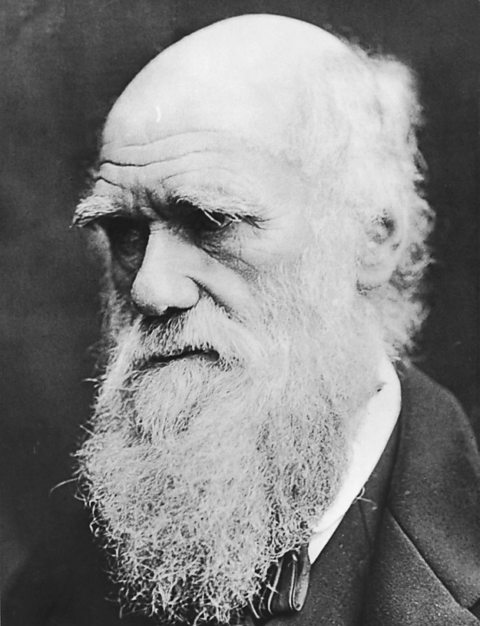Darwin and natural selection

natural selectionThe natural process whereby the best-adapted individuals survive longer, have more offspring and thereby spread their characteristics. Sometimes referred to as 'survival of the fittest'. is a process where organisms that are better adapted to an environment will survive and reproduce. This means that the advantageous allelesDifferent forms of the same gene. of this variant organism are passed on to offspring. Over many generations, the process of natural selection leads to evolutionThe process of change in the inherited traits of a population of organisms from one generation to the next. occurring.
Darwin
Charles DarwinAn English naturalist (1809-1882). In 1859 Darwin published On the Origin of Species, which outlined his theory of evolution. was an English naturalist who studied variation in plants, animals and fossils during a five-year voyage around the world in the 19th century. Darwin visited four continents on the ship HMS Beagle.
Darwin observed many organisms including finches, tortoises and mocking birds, during his five week visit to the Galapágos IslandsIslands in the Pacific Ocean, visited by Charles Darwin., near Ecuador in the Pacific Ocean. He continued to work and develop his ideas once he returned from his voyages. He thought that natural selection could explain how fossils related to living organisms but why there were differences between them.
Darwin proposed the theory of natural selectionThe natural process whereby the best-adapted individuals survive longer, have more offspring and thereby spread their characteristics. Sometimes referred to as 'survival of the fittest'. and how this drives the evolutionThe process of change in the inherited traits of a population of organisms from one generation to the next. of new species. Darwin is associated with the term 'survival of the fittest' which describes how natural selection works. The main stages in natural selection are:
1. Variation
Within a species there can be a wide range of variationDifference between individuals, distance from the norm., and this variation is because of differences in their geneThe basic unit of genetic material inherited from our parents. A gene is a section of DNA which controls part of a cell's chemistry - particularly protein production. called allelesDifferent forms of the same gene..
2. Competition in a community
All of the plants and animals in a habitatA place where plants, animals and microorganisms live. form a communityAll the organisms that live in a habitat (plants and animals).. All of these living organisms need to compete with one another for survival. For example, animals will compete for food and plants compete for light.
competitionThe interaction between organisms after the same limited resources. drives the process of natural selection.
3. Reproduction
Individuals with characteristics most suited to their environment are more likely to survive and reproduce - commonly known as 'survival of the fittest'. The alleles that code for a phenotypeThe visible characteristics of an organism which occur as a result of its genes. that allows these individuals to be successful within their environment are passed on to their offspring. This results in these specific alleles becoming more common.
Those that are poorly adapted to their environment are less likely to survive and reproduce. Their alleles, and therefore their phenotype, are less likely to be passed on to the next generation. Over many generations of offspring, a species will gradually evolve. Both genes and the environment can cause variation, but only genetic variation can be passed on to the next generation.
Peppered moths
A famous example of natural selection is that of the peppered moth.
Before the industrial revolution in Britain, most peppered moths were of the pale variety. This meant that they were camouflaged against the pale birch trees that they rest on. Moths with a mutant black colouring were easily spotted and eaten by birds. This gave the white variety an advantage, and they were more likely to survive to reproduce.
Airborne pollution in industrial areas blackened the birch tree bark with soot. This meant that the mutant black moths were now camouflaged, while the white variety became more vulnerable to predators. This gave the black variety an advantage, and they were more likely to survive and reproduce. The dark moths passed on the alleles for black wing colour leading to offspring with the black wing colour phenotype. Over time, the black peppered moths became far more numerous in urban areas than the pale variety because their phenotype was better suited to the environment.
Note that this change in phenotype was not due to pollution making the moths darker. The dark variety had always existed, but was the best suited variant when the environment changed. It took many generations before the population of moths was mainly black in colour.